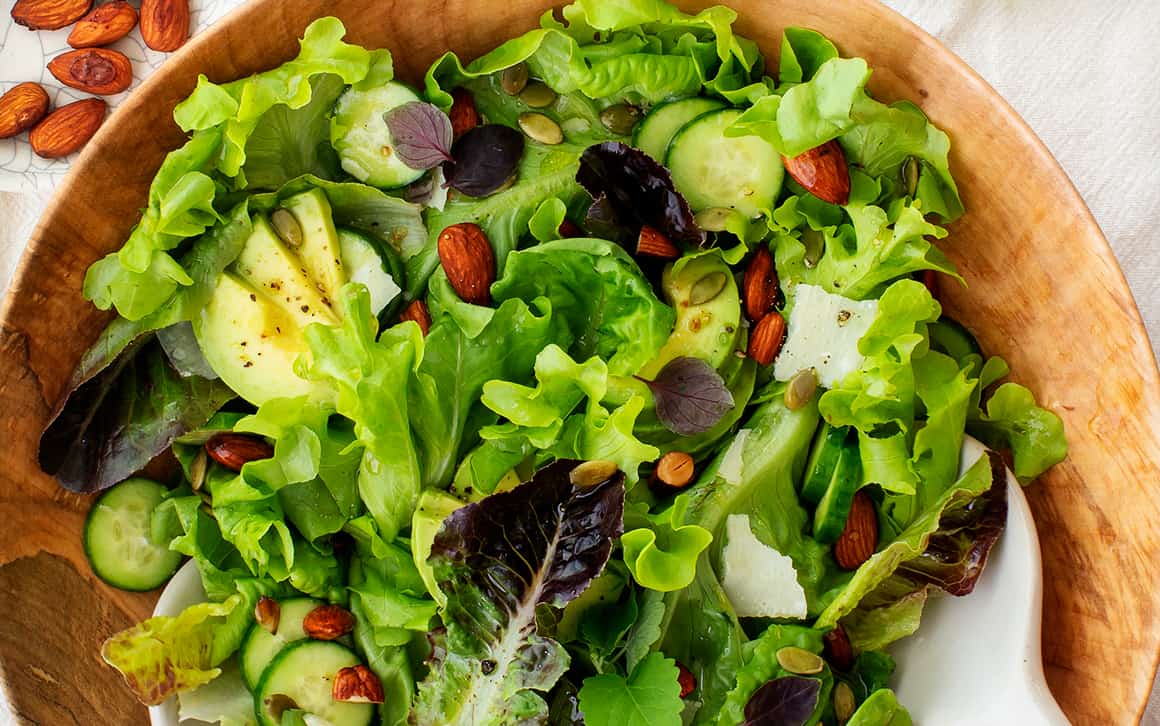Some forms of salad have been consumed for centuries, originally made mostly of cabbage and root vegetables, flavored with vinegar, oils and herbs. Ancient Greeks believed that raw green vegetables promoted good digestion, and the Romans agreed. Early recordings of lettuce appeared back in the 6th century B.C. although it bore little resemblance to our current varieties.
Salads have come a long way since the pedestrian lettuce, tomato and cucumber version. Today there is no end to the hundreds of varieties, ingredients and dressings available to our salad-crazed nation. In the 1920s, they hit the big time, as restaurant chefs created Caesar, Chef, Cobb and fruit salads. Canned veggies and fruits became more available and were tossed into the mix, allowing Americans to eat salads year ’round. Simple vinegar and oil made room for bottled dressings and mayo, paving the way for “bound salads.” Sounds a little kinky, but this category includes some of our favorites: tuna salad, chicken salad, egg salad, ham salad, shrimp and crab salad. The chicken came first, showing up in mid-1800s cookbooks, tuna much later with the advent of canned tuna. In the late 1930s, Spam made ham salad easy, and egg salad was a natural. With the introduction of Jello gelatin, molded salads took their colorful place at any luncheon.
Restauranteur Robert Cobb created the salad that bears his name at his Brown Derby restaurant in Hollywood; chef salad debuted at the Ritz Carlton in New York and originally included sliced ox tongue along with ham and cheese. (Mercifully, in later years, turkey or chicken replaced the ox tongue.) In Hollywood’s early days, Caesar salad was embraced by the stars, who happily munched on this trendy salad at some of their favorite restaurants. The creator, Caesar Cardini, eventually bottled and sold his trademark dressing in the Los Angeles area. A favorite restaurant in Chicago, the Blackhawk, featured their signature “spinning salad bowl” along with every entree on the menu, served tableside.
French chefs made vinaigrette dressing with oil, herbs, chopped shallots, and paprika, throughout the 1800s.Those especially adventurous added tomato sauce, which became the foundation for classic French dressing. Kraft Foods, in 1939, introduced their popular version, orange in color. Boomers remember it drizzled over iceberg lettuce. Miracle Whip appeared around the same time, labeled salad dressing but primarily used to hold together chopped meat, chicken or eggs for a tasty sandwich filling. In the 1920’s, Green Goddess dressing was created at a San Francisco restaurant in honor of a play by the same name. (Good thing Death of a Salesman didn’t debut that same year.)



